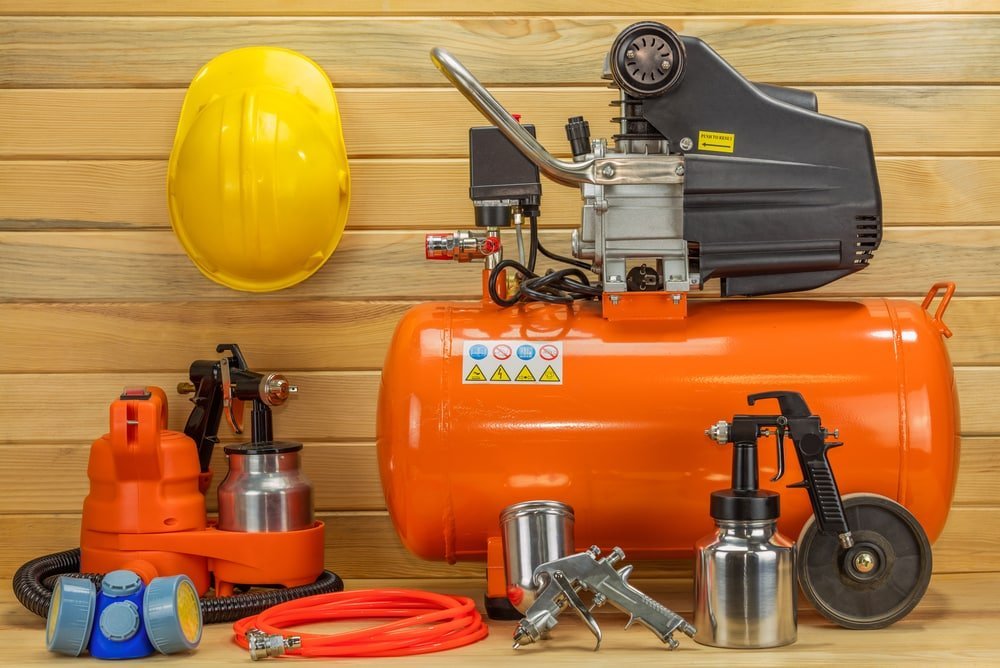


Features-to-Look-for-When-Buying-an-Air-Compressor
Whether you are a professional or occasional DIYer, you will surely need an air compressor more often than you think. An air compressor can do a wide range of applications, and a must option to add in your tool list. But picking up the right air compressor for your project can keep you dumbfounded if you don’t know the right way of looking for it. There are some basic factors to analyze first before going to pick 20 gallon air compressors. If you can analyze them thoroughly, your task will turn out to be more convenient than ever. Scroll down to know the details.
Factors to consider before choosing your air compressor:
Tool Power
The first factor to consider while determining an air compressor is its power rating, marked as Horsepower (HP). If your task requires around 24 Amps of current with 220 Voltage in a single-phase power operation, then the motor requirement would be 5 HP. The industrial compressors are rated more HP than the DIY-purpose ones.
CFM (Cubic Feet per Minute) Requirement
CFM is the unit that measures the volumetric airflow of the compressor. Different PSI levels require a different level of CFM. The higher capacity machines have a higher range. For small-scale operations, the ideal level of CFM is below 10. For example, framing nailers require 2 CFM under 90 PSI pressure, whereas dual sander machines need 11.
Air Pressure Measurement
PSI (pounds per square inch) is the unit to measure the air pressure of a compressor. Usually, 90 PSI level is enough for almost all air tools to operate without any issues. But for providing this PSI level, you need to purchase an air compressor that affords a higher shut-off force. Luckily, most machines offer plenty of pressure to ensure your successful DIY tasks. Higher PSI rating makes any tool capable of holding more air and performing like a bigger tank than its usual size. For example, if you’ve got a 2-gallon machine working at 150 PSI range, it can hold air like a 3-gallon tank with an operating pressure of 100 PSI.
Single vs. Dual Stage
Usually, a single case compressor has one cylinder directly pumping air into the tank. In the case of the double-stage, more than one cylinders are present, pumping air from one to another, and finally into the tank. If you need higher air pressure, a double stage will be a good option. But otherwise, good quality single-stage machines will be perfect for almost all DIY missions.
Oil or Oil-less?
Both types of compressors are pretty available in the market. The oil-less machine contains fewer accessories and much lighter than the other type. They don’t need any additional maintenance as well due to no lubricating oil. But, their operation involves relatively more noisy sounds. Oiled machines suit for heavy-duty and industrial operations.
Direct Drive/Belt Drive
In the case of a direct-driven compressor, the motor is connected straight to the crankshaft, unlike the belt-driven machines. They are great, considering high energy and efficiency; but are noisier, difficult in maintenance, and relatively expensive. Again, airflow adjustment and air pressure control are much flexible if you pick a belt-driven compressor. They are also less expensive. Installation process and further maintenance are also easier. Now it’s up to you which one you would like to pick.
Tank Size
The compressor tank only holds the required air you need to perform your task. The tank size doesn’t work as any significant factor to consider before choosing your air compressor for roofing. Larger tanks size confirms more air to accommodate. If you pick such one, you might not need to stop on tank refilling purposes during your work. Standard capacity tanks ranging from 1 to 5 or 6 gallons will be adequate for typical air-related tasks.
Duty Cycle
A duty cycle is a percentage unit, referring to the maximum run time of the machine under 10 minutes. If a compressor has a 75% cycle, that means it can run uninterruptedly for 7 and a half minutes out of any 10 minutes. A better duty cycle can help you operate the machine more effectively and complete your task effortlessly.
Power Source
Indoor projects can easily be operated using an electric compressor. They don’t emit fumes like gas-powered machines. Electric machines can run either on 110V (in the US region) or 220-240V. But if you consider outdoor projects, electricity might be an issue to consider. In such cases, compressor running on gasoline engines might come as handy. They are efficient and also lower in price.
Portability
Portable air tools are lighter, and you can easily lift them off for outer activities. Weight isn’t the only issue making those machines easily portable.You also need to check their shapes as well. Small and slim body compressor units are the easiest to carry. Avoid wide ones. Check technoguru for best tools.
Life Expectancy
Considering the life expectancy of the machine is always one of the most important factors to consider. Air compressors are expected to give service for around 10 to 15 years. Make every of your penny worthy. Purchase a compressor that can go for a long run, and also try to pick one with a better guaranty or warranty option.
Wrapping Up
So, here we go. You’ve learned almost all the crucial factors you’ll need to consider before purchasing your air compressor. The foremost thing you need to do is analyze your project requirement and the pneumatic tool you’re going to operate. If the machine’s detailed specifications match all of your required project demands, you’re okay going with that compressor.
